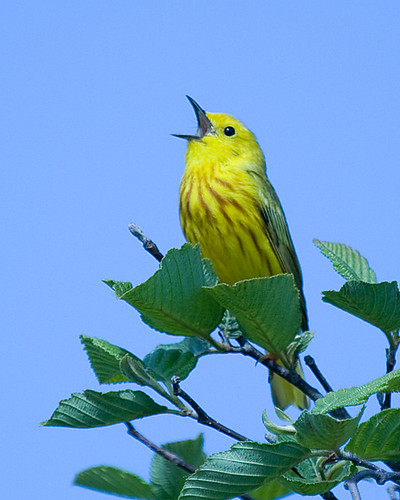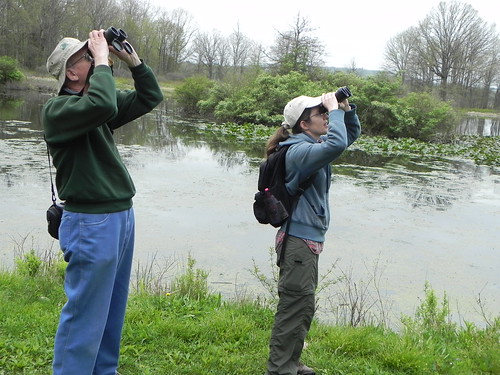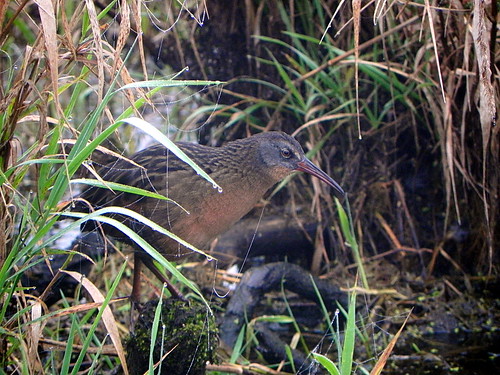“Sweet, Sweet, Sweet. I’m so sweet!” A bird called from the bushes and the group I was with claimed that it was saying those magical words. “Sweet, Sweet, Sweet. I’m so sweet!” All I hear is a series of tweets, but I nod and try to hear what the group hears and see what they are seeing.
By standing strategically behind a better, but shorter, birder, I could see what she was looking at. Far, far away, there was a tiny yellow bird flitting in a bush that occasionally paused to sing. “Tweet, tweet, Tweet, Tweet” in a way that, somehow, everyone else was hearing “Sweet, sweet, sweet, I’m so Sweet”.

It was a Yellow Warbler, one of the first warblers I learned to identify by sound. It took me five years to truly hear that the bird was singing “Sweet, sweet, sweet, I’m so sweet”, but over time it started to be more clear. Even more clear was the fact that hanging around with better birders was the best way to learn to identify birds.
Every year, that opportunity has come along in the form of the Birdathon on the first Saturday in May. Birders gather at Audubon at sunrise to watch the birds at the birdfeeder and count each species while eating snacks brought in by everyone.
And the snacks: fresh eggs and sausage, donuts, coffee cakes, fresh fruit and so much more. My son came with me at the beginning of one Birdathon and his jaw dropped as he saw all the snacks laid out in front of him.
This year, the Birdathon will be different, like so many other things. There will be no large gathering of experts and no giant spread of food. Birders will be in small family groups, not mobs of 15-20 people roaming with binoculars.
Donations for the birdathon, which fund a scholarship for a deserving environmental student, have always been gathered from visitors and volunteers at the Nature Center. Sadly, the doors are closed and locked. Without the usual crowd of visitors, members, volunteers and friends walking through the door, only one fifth of the scholarship was raised when this was written.
You can donate to the birdathon scholarship in either a whole amount or per species. Audubon’s naturalist birding crew normally sees somewhere between 75-100 birds in a day at the Birdathon, but that truly is only part of the story.

The biggest part of the birdathon has always been community. There is an immense sense of community created by a group of people that are going out to raise money by finding as many birds as possible. It is a time of communal food, sharing of knowledge, and inspiration. Normally, the scholarship student goes out to find birds too, which creates an amazing opportunity to inspire and teach a new generation how diverse and amazing birds can be.
This is the one day a year that really taught me to identify birds. The clues that birders use to identify things are truly fascinating. Wilson’s Warblers wear a bad toupee. Ovenbirds sing “teacher, teacher, teacher.” Rose-breasted Grosbeaks sound like a robin that has taken voice lessons. Red-winged Blackbirds are black birds with red wing patches, but red birds with black wings are Scarlet Tanagers, not Black-winged red birds.
Looking into a forest with a birder is like looking into a different world. Songs, sounds and movement mean so much more to someone who is tuned into the birdscape around them. Going out with the birdathon crew each year gave me insight and a glimpse of all the bird things happening out there that I was missing out on.
Jeff Tome is a Nature Educator at Audubon Community Nature Center Audubon Community Nature Center builds and nurtures connections between people and nature. ACNC is located just east of Route 62 between Warren and Jamestown. The trails are still open from dawn to dusk as is Liberty, the Bald Eagle. Though the Nature Center is currently closed, including restrooms, due to COVID-19 restrictions, drive-thru sales are available from the Blue Heron Gift Shop. More information can be found online at auduboncnc.org or by calling (716) 569-2345.


Recent Comments